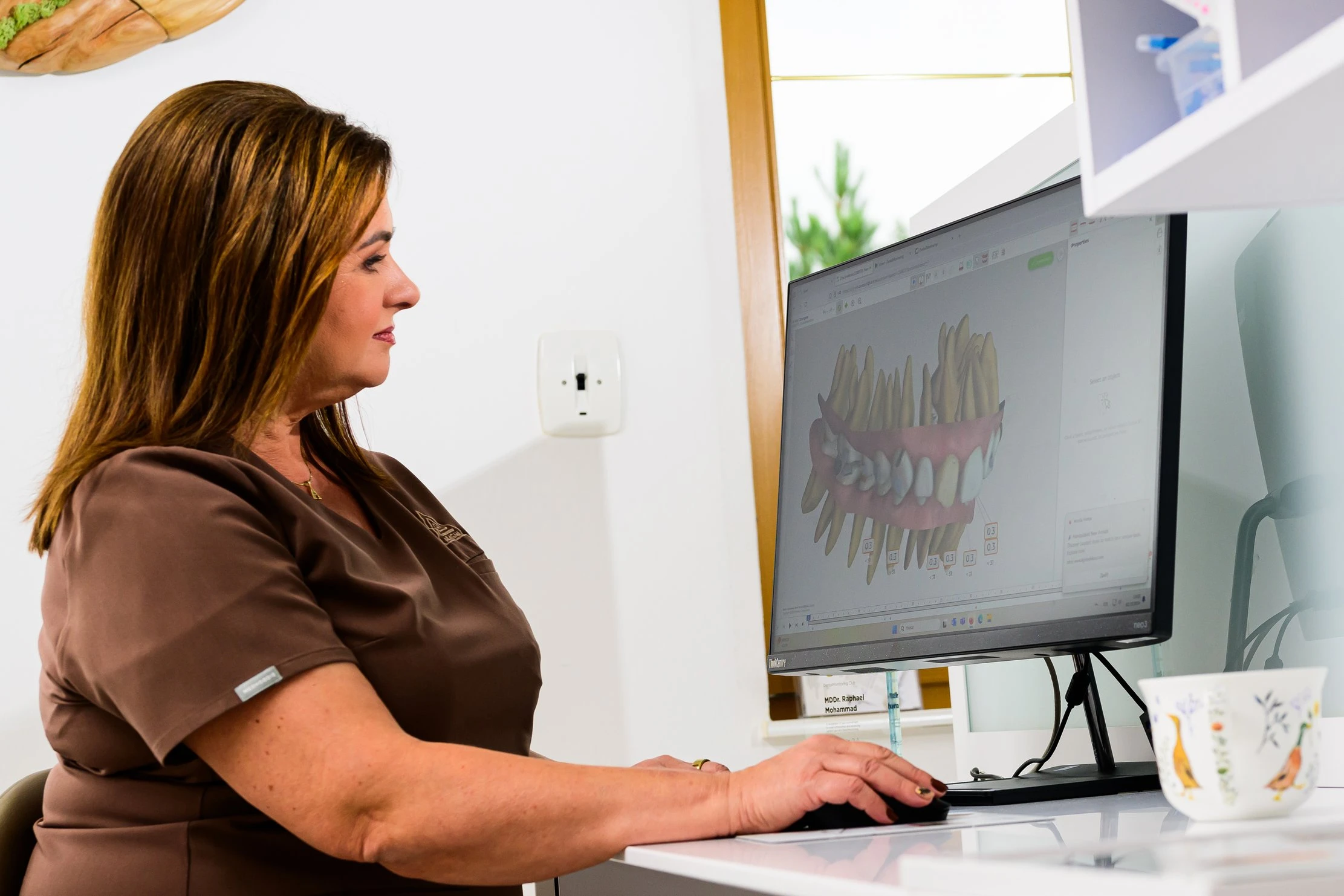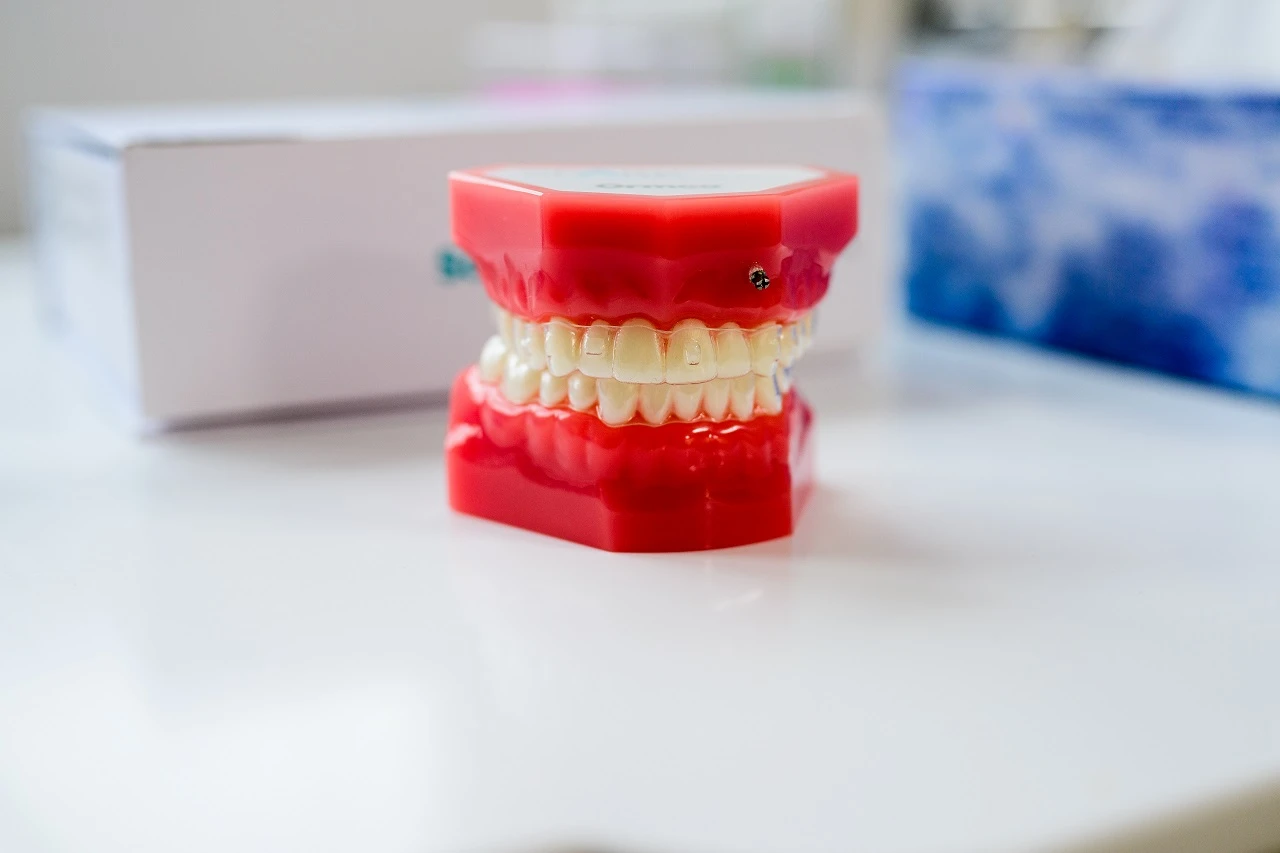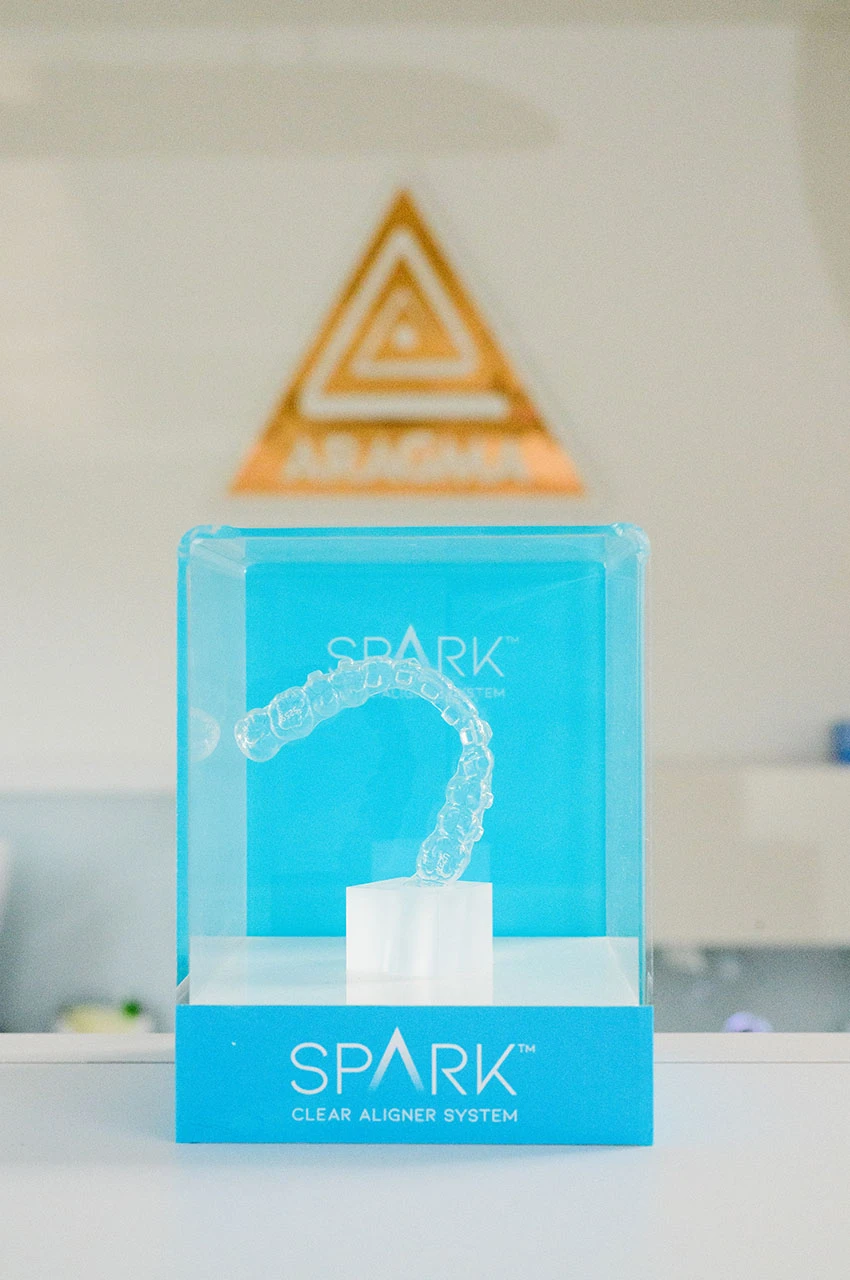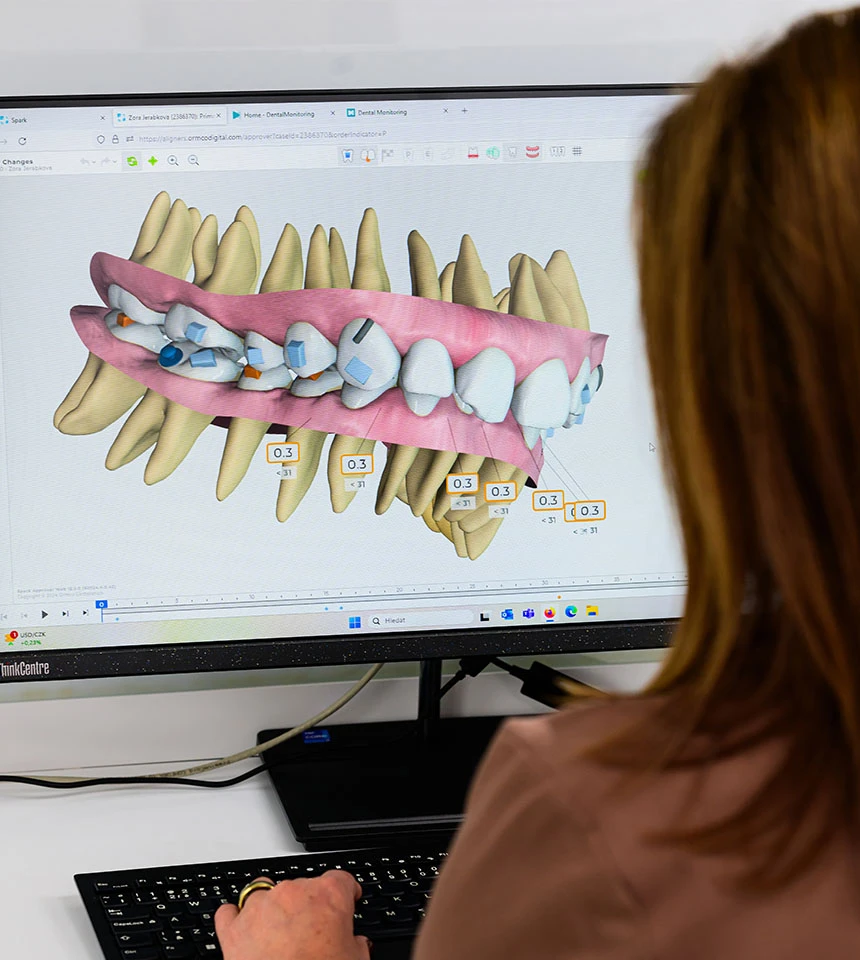Treatment with aligners begins with careful planning and programming of specific tooth movements. The patient is presented with a computer animation of the course of treatment, including the number of splints, which are changed at regular intervals. The necessary teeth are then fitted with so-called attachments - small tooth-coloured projections that help achieve the desired movements. This is followed by instruction on changing the splints, including instructions on oral hygiene and the splints themselves. Thanks to the Dental Monitoring system, treatment is monitored remotely, minimizing the need for office visits. Once the final result is achieved, all attachments are deburred and a retention wire 'retainer' is bonded to the back of the teeth and retention splints are made to maintain long-term stability.
Orthodontics
Orthodontics is a specialized branch of dentistry, focused on the diagnosis, prevention and treatment of irregularities in the position of teeth and jaws, both in childhood and adulthood. Orthodontic treatment is carried out under the supervision of a specialist who, on the basis of a consultation and a thorough initial examination, establishes a diagnosis and prepares an individual treatment plan. Depending on the severity of the defect, treatment is carried out using sensing or fixed appliances or modern invisible braces. During treatment, cooperation with a dentist is crucial, and in more complex cases, with other specialists such as a maxillofacial surgeon, prosthodontist or implantologist. For more challenging defects, treatment may require more time and interdisciplinary collaboration to achieve optimal results.




